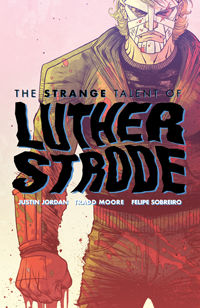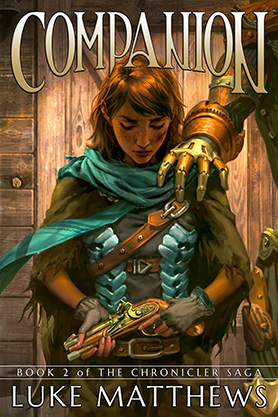
Story by Tom Morello
Art by Scott Hepburn
Intellectual escapee Simon and headstrong prostitute Orchid, along with Orchid’s little brother Yehzu, have been captured and sold into slavery. Although Simon insists that escape and rebellion are not only possible, but right, his words fall on the deaf ears of his broken fellow slaves. Moments before being sold at auction, Simon devises a plan to escape and gain entry to Fortress Penuel, where he will mount a rescue of the rebel leader Anzio…
While the first issue of Orchid, by necessity, focused on introductions and world-building, Morello spends significantly more time building on the personalities of his protagonists here. Simon is a know-it-all who runs his mouth too much, and spends much of his time confusing Orchid into discounting his ideas. Orchid is stubborn to a fault, single-mindedly focused on her and Yehzu’s survival after their mother’s murder. The character moments can be heavy-handed but they work, and never distract from the budding adventure at hand. The historical asides help to build Morello’s post-apocalyptic vision – one that is not devoid of life but teeming with it, and all of it dangerous – and serve to provide context for “present day” events.
Hepburn’s art is strong throughout, an interesting mix of gritty and cartoony that serves the character depictions well. His character designs are intriguing and distinguishable, and his monsters are suitably scary – whether they be animal or human in nature. His backgrounds are lush, showing us the swampy remains of a once waterlogged world rather than the standard desert terrain typical of the genre.
Orchid has its flaws – primarily in dialogue – but a lot of story is told in a small amount of space, and the world being built is a unique blending of different sci-fi and fantasy genres that, so far, works well. A new character introduction at the end of the book leaves us on a great cliffhanger, eagerly anticipating next month’s issue.










